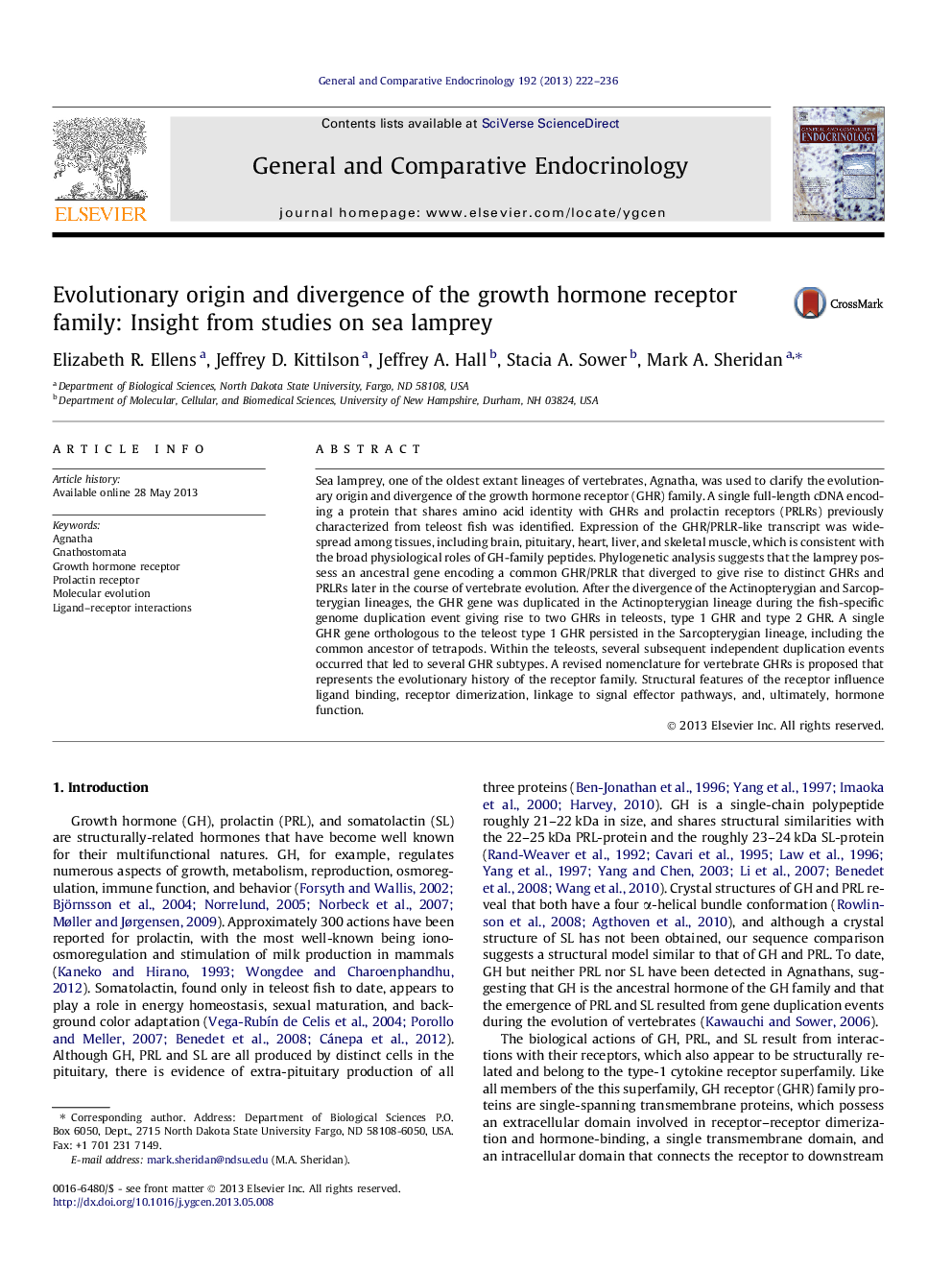| کد مقاله | کد نشریه | سال انتشار | مقاله انگلیسی | نسخه تمام متن |
|---|---|---|---|---|
| 5901301 | 1568913 | 2013 | 15 صفحه PDF | دانلود رایگان |
- The evolution of the growth hormone receptor (GHR)/prolactin receptor (PRLR) family was studied.
- A full-length cDNA encoding a GHR/ PRLR-like protein was isolated from sea lamprey.
- Structural and phylogenetic analysis suggests that lamprey GHR/PRLR is a precursor to gnathostome GHRs and PRLRs.
- A model for the evolution of the GHR family and a revised nomenclature is proposed.
Sea lamprey, one of the oldest extant lineages of vertebrates, Agnatha, was used to clarify the evolutionary origin and divergence of the growth hormone receptor (GHR) family. A single full-length cDNA encoding a protein that shares amino acid identity with GHRs and prolactin receptors (PRLRs) previously characterized from teleost fish was identified. Expression of the GHR/PRLR-like transcript was widespread among tissues, including brain, pituitary, heart, liver, and skeletal muscle, which is consistent with the broad physiological roles of GH-family peptides. Phylogenetic analysis suggests that the lamprey possess an ancestral gene encoding a common GHR/PRLR that diverged to give rise to distinct GHRs and PRLRs later in the course of vertebrate evolution. After the divergence of the Actinopterygian and Sarcopterygian lineages, the GHR gene was duplicated in the Actinopterygian lineage during the fish-specific genome duplication event giving rise to two GHRs in teleosts, type 1 GHR and type 2 GHR. A single GHR gene orthologous to the teleost type 1 GHR persisted in the Sarcopterygian lineage, including the common ancestor of tetrapods. Within the teleosts, several subsequent independent duplication events occurred that led to several GHR subtypes. A revised nomenclature for vertebrate GHRs is proposed that represents the evolutionary history of the receptor family. Structural features of the receptor influence ligand binding, receptor dimerization, linkage to signal effector pathways, and, ultimately, hormone function.
Journal: General and Comparative Endocrinology - Volume 192, 1 October 2013, Pages 222-236
